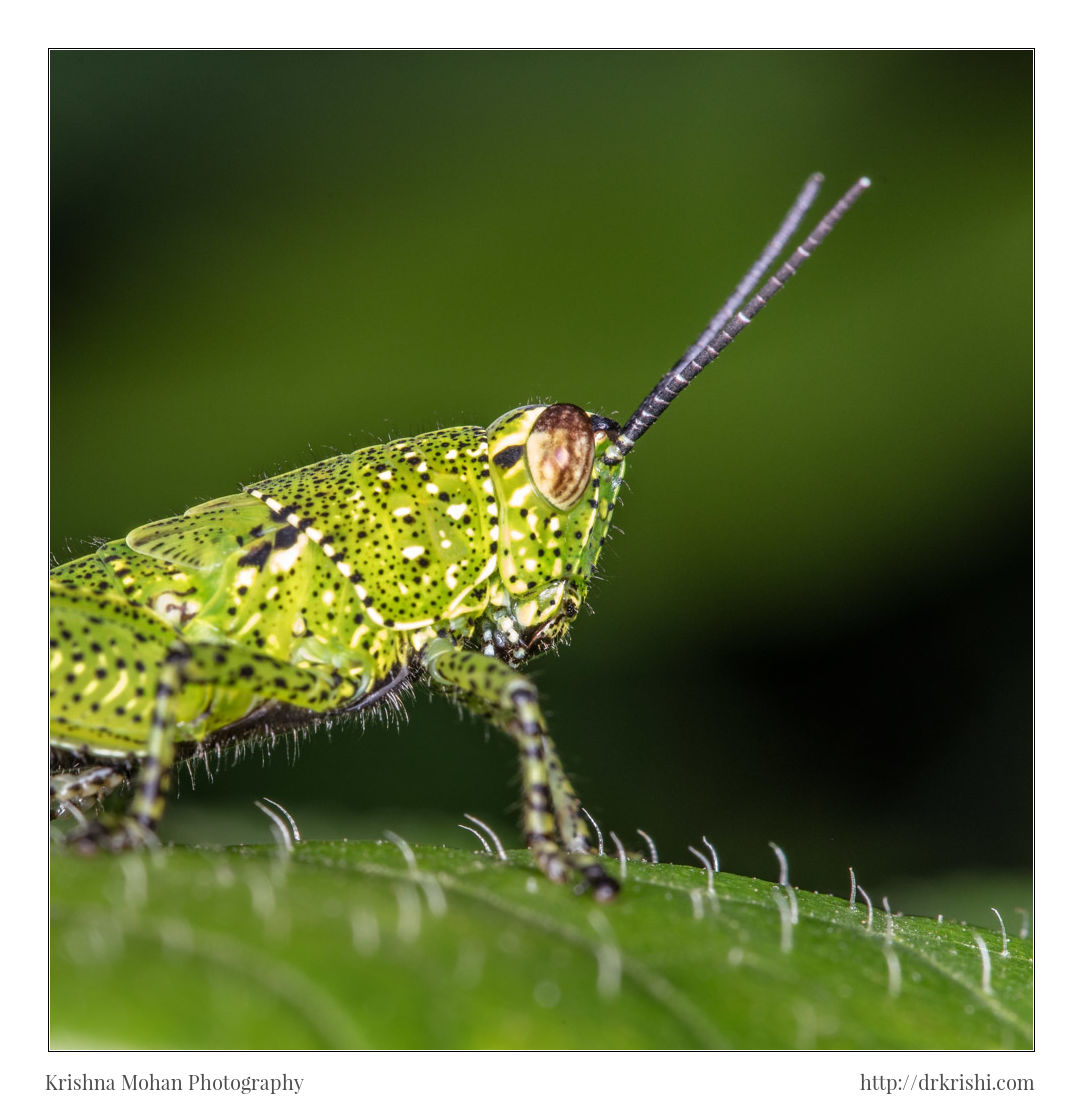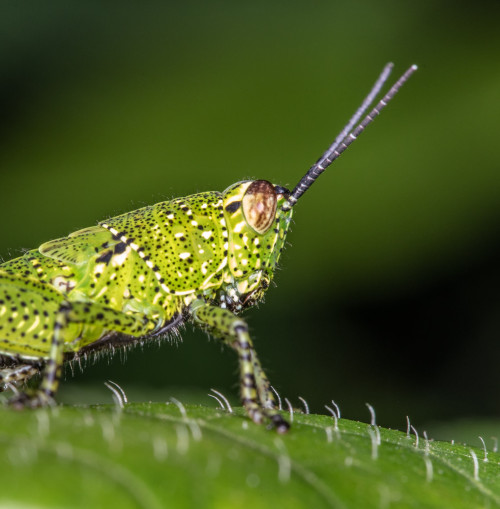
I found this short horned grasshopper nymph belonging to Xenocatantops species in my garden feeding on leaves. They belong to subfamily Catantopinae, which is classified under family Acrididae. These grasshoppers go through a drastic makeover during their adult life. These green nymphs will change their colour to dark brown/black with pale white stripe colored adults. I photographed this grasshopper using a Canon EOS 5DS R with Canon EF 100mm f/2.8L Macro IS USM lens, illuminated by a Canon MT-24EX macro twin light flash.
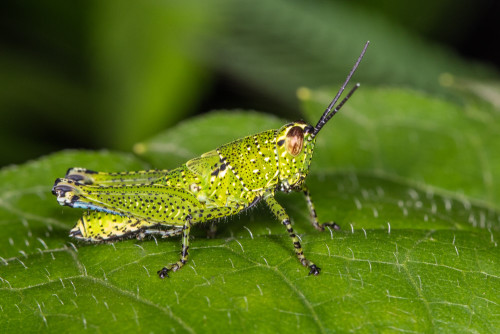
Grasshoppers are of great economic importance, because they constitute an important group of pests and pose a constant threat to cereal crops, pulses, vegetables, orchards, and grassland and forest plantations all over the world. Both nymphs and adults are voracious pests, feeding by biting along the edges of leaves and when found in large numbers causing extensive defoliation, which in turn reduces the photosynthetic capacity of the plant.
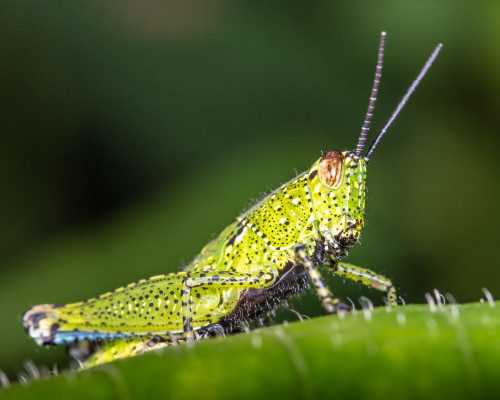
When we take macro photographs of small critters such as these, the depth of field become too shallow. When the aperture is reduced to such a small size, the ambient light is insufficient to illuminate the subject, thereby resulting in a darkened image. I have a Canon MT-24EX macro twin light flash, which when used with diffusers, provides wonderfully controlled lighting. Using flash, I can raise the shutter speed to say, 1/200th of a second. Unfortunately, when you do that, your subject will be well lit, but not background, which goes dark. This is why so many close-up shots photographed using flash, show a dark background.
If you prefer a more ‘natural’ background for your photographs, in spite of using flash, here is a technique I use: After knowing the ambient light reading, I set my camera so that it’s under exposed by 1.5 to 2 stops of light from the actual meter reading (without using flash). Here my reading was f/11 aperture, ISO 100, 1/5th of a second. At 1/5th second shutter speed, it is impossible to handhold. Beside, using a tripod in the field with a subject like a Grasshopper which can hop away any time it chooses to, is challenging.
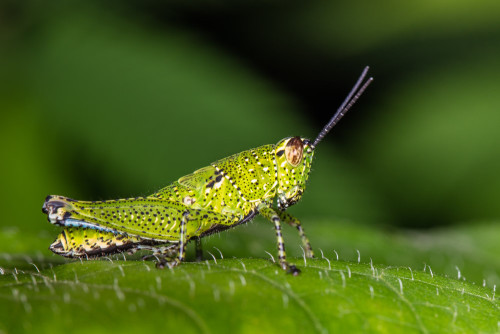
Keeping all other parameters constant, I change my shutter speed to 1/80th of sec and ISO to 400 which makes the camera easy to hold. This, in turn leaves the background slightly under exposed, but not too dark. Flash will illuminate the subject and the foreground and the resultant image will be more ‘natural looking’. If the surrounding light is too low, like during the late hours of dusk, it will be difficult to get a natural looking photo. You can, however, setup multiple slave flashes to illuminate the background for you.

